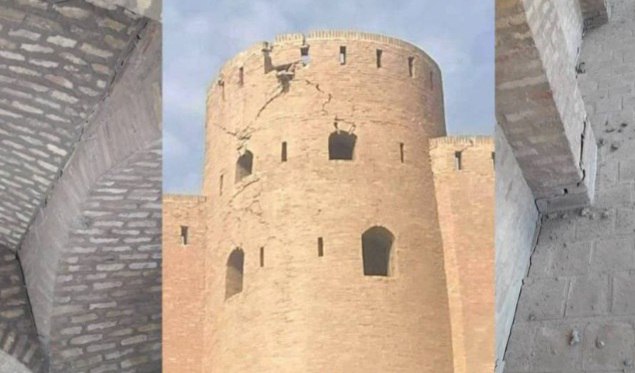RASC News Agency: According to media reports, the recent earthquakes in Herat province have not only resulted in loss of life and financial damages but have also inflicted significant harm upon the region’s historical monuments.
On Tuesday, October 17, it was reported that the Ikhtiaruddin Castle, a cultural heritage site in Herat, sustained severe damage as a consequence of the earthquakes that occurred last week. Reports indicate that numerous buildings in Herat city, including historically significant structures and mosques, now face the imminent risk of destruction due to the seismic activity in the province.
Moreover, images of the ancient Herat Grand Mosque have been widely disseminated in the media, unveiling the adverse effects of the earthquakes on this historical monument. The published imagery vividly illustrates the devastation inflicted upon the intricate garlands of the Herat Grand Mosque as a direct consequence of the seismic disturbances.
It is crucial to underscore that Afghanistan is home to an abundance of age-old monuments. Both the Herat Grand Mosque and Ikhtiaruddin Castle stand as significant historical sites in the western region of the country, deserving the utmost preservation and safeguarding.
It is worth mentioning that Herat Province experienced a powerful earthquake measuring 6.3 magnitude on Saturday, October 7, resulting in the tragic loss of lives and injuries among a substantial number of residents.
Furthermore, reports indicate that a considerable portion of the victims comprises of women and children. It is believed that these earthquakes have contributed to the development of mental disorders and trauma within this vulnerable demographic.
Meanwhile, prior to these reports, sources from Herat province had claimed that the Salma dam in Chisht district had also suffered damage. These claims, however, have been firmly refuted by officials from the Taliban group.






